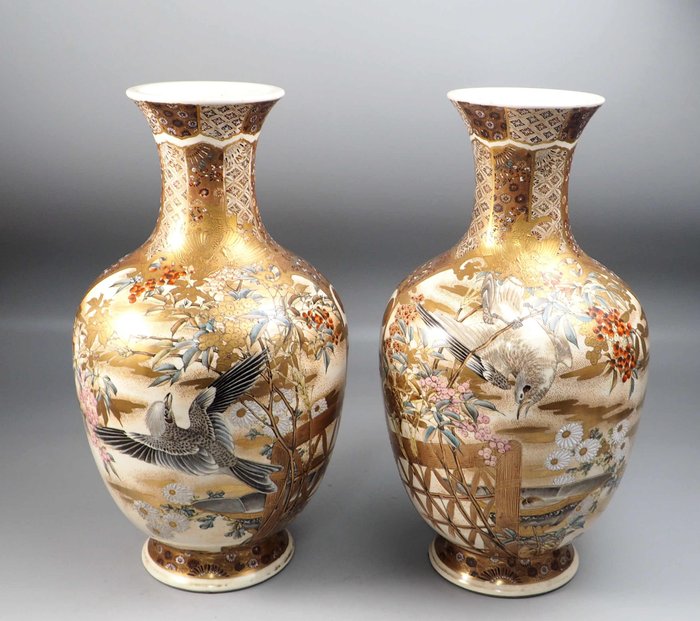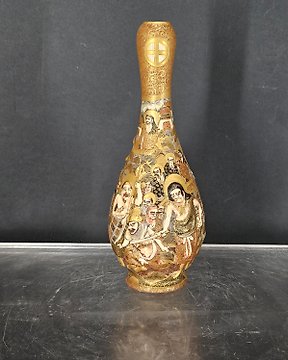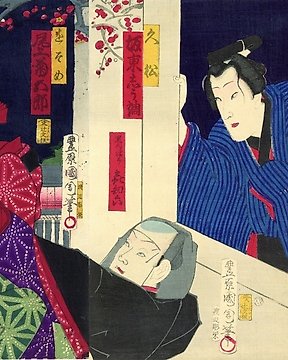Alkuperäinen japanilaisen sodan panssari - Kangas, rauta, nahka - Samurai Ashikaga clan - Japani - Edon aikakausi noin 1650
Nro. 74887883

Pullomaljakko (2) - Satsuma - Keraaminen - kukkia ja lintuja - Marked 'Dai Nihon Kyōto Kinkōzan zō' 大日本京都錦光山造 - Japanese antiques, Museums grade - Japani - Meiji period (1868-1912)
Nro. 74887883

Pullomaljakko (2) - Satsuma - Keraaminen - kukkia ja lintuja - Marked 'Dai Nihon Kyōto Kinkōzan zō' 大日本京都錦光山造 - Japanese antiques, Museums grade - Japani - Meiji period (1868-1912)
Kinkozan:
It is said that the first Tokuemon founded the company in Awataguchi around 1645 in the early Edo period. His surname was Kobayashi, and he called himself Kagiya. As the brothers of the fourth generation Kihei and the fifth generation Yohee died one after another, Yohee's son Bunzaburo was adopted by Maruya Chobei, inherited the headship of the family at the age of 15, and became the sixth generation Kinkozan Sobei.
The 6th generation Kinkozan Sobei, who was the head of the family at the end of the Edo period, turned his attention to exports with the opening of the country [1], and his son, the 7th generation Kinkozan Sobei, was an entrepreneur during the Meiji and Taisho periods and produced many products under the name ``Kinkozan''. He left behind works. The seventh generation Sobei Kinkozan took over the family business at a young age, as his father (the sixth generation Sobei Kinkozan) was active in the export business, and contributed to the promotion of the pottery industry in Kyoto. He then produced ``Kyo Satsuma'', which is Satsuma ware with Kyo ware-style painting, and porcelain cloisonné, which was made from pottery, and exported them to Europe, America, and other parts of the world under the ``Kinkozan'' brand.[3] He created colored gold brocades similar to Satsuma ware, made them even more elaborate, and often traveled to foreign countries to inspect them, successfully exporting them. He worked hard to establish the Ceramics Research Institute and the Ceramics Training Institute, which produced young talented people.
Size: H40×W21cm
Shipping method: Japan Postage support shipping worldwide.
The item includes a pari of vases, thus we will pack them seprately. The shipping fee will be higher than usual. Please understand.
Saattaisit pitää myös
- 16+
Tämä esine oli esillä kohteessa
Näin ostat Catawikistä
1. Löydä jotain erityistä
2. Tee korkein tarjous
3. Maksa turvallisesti




